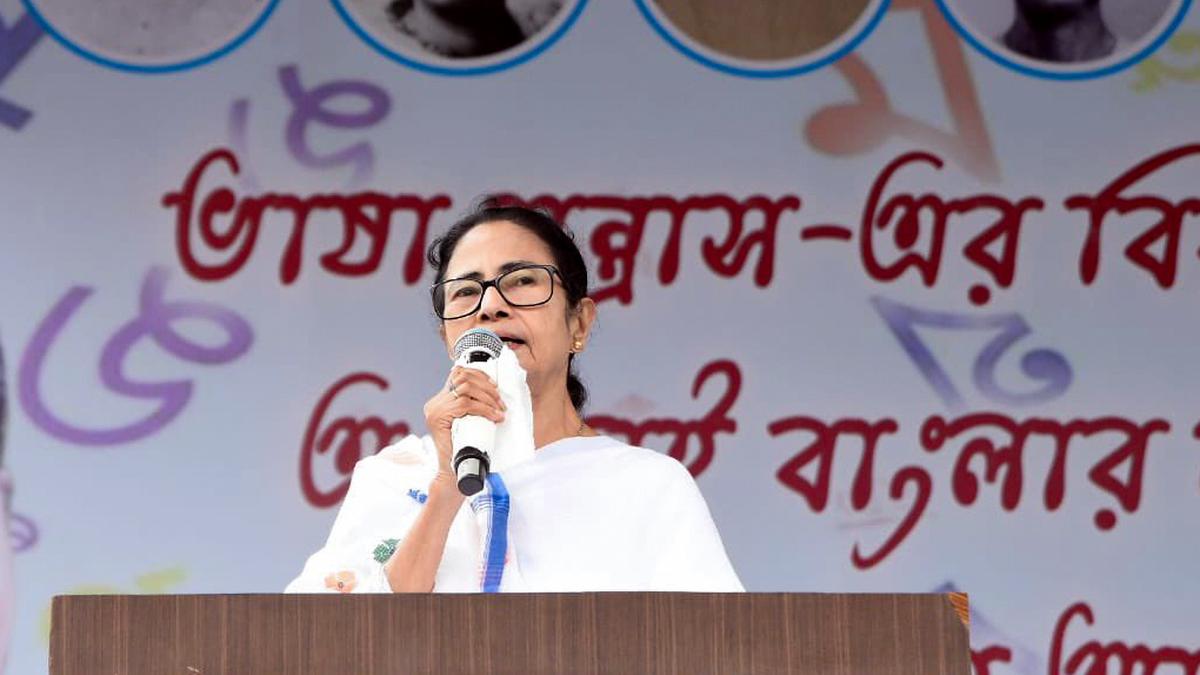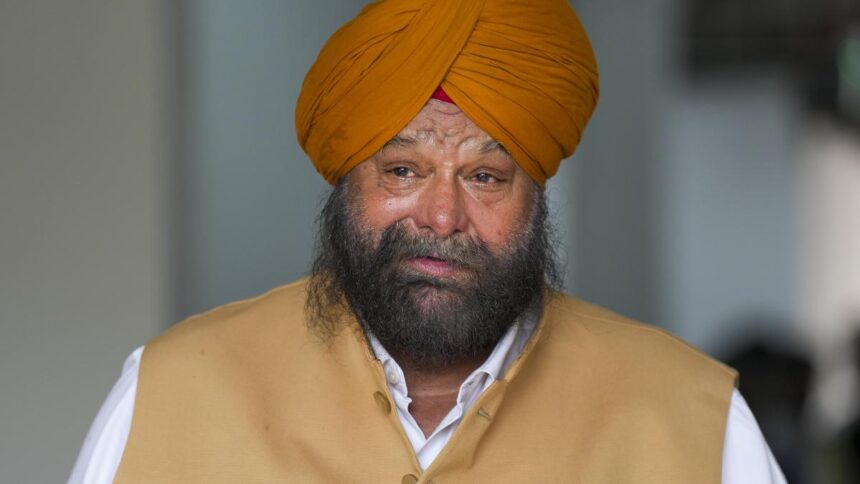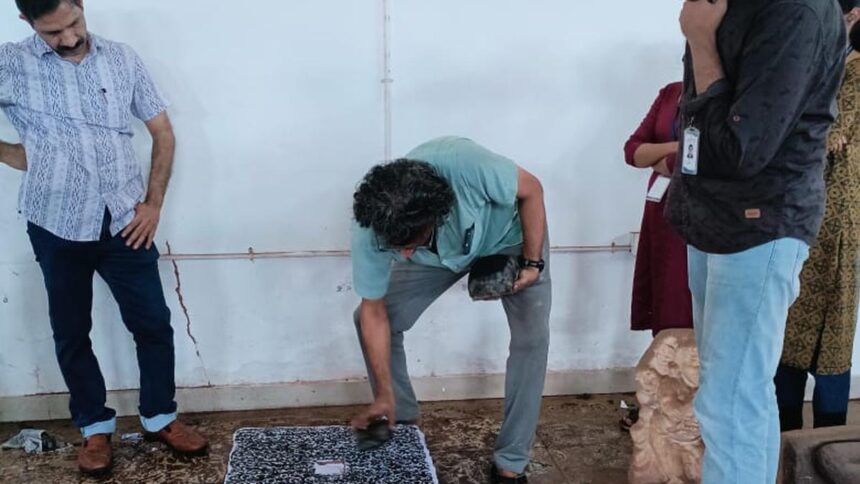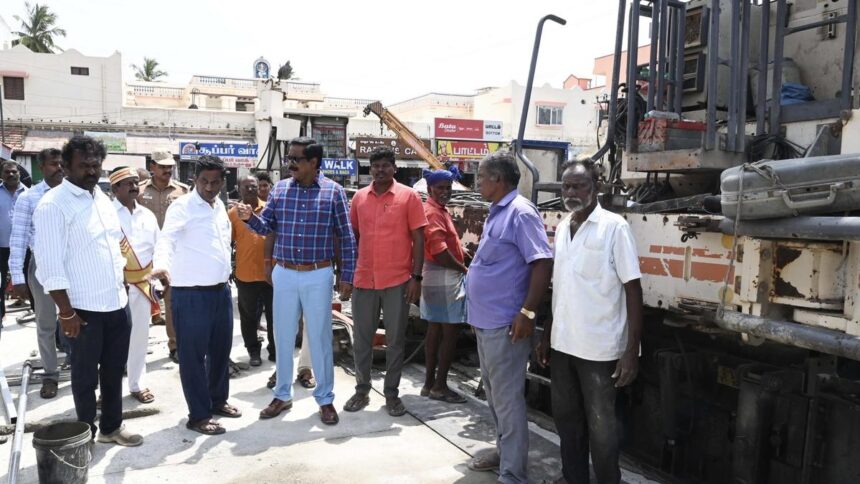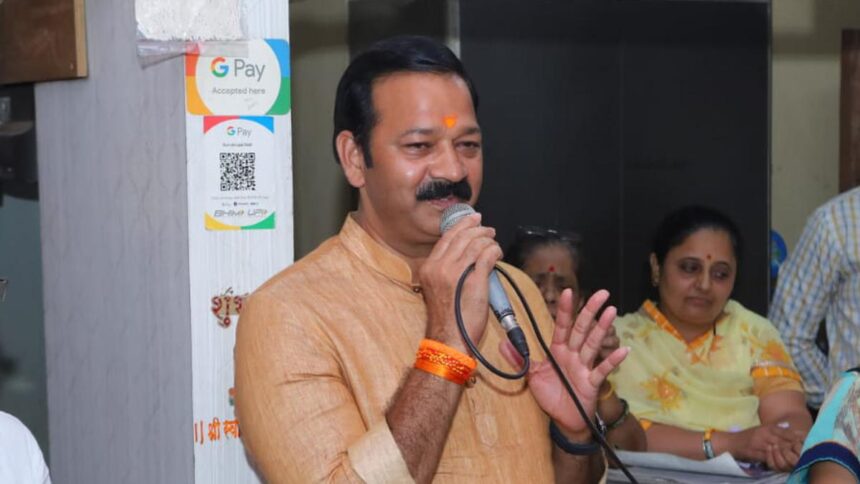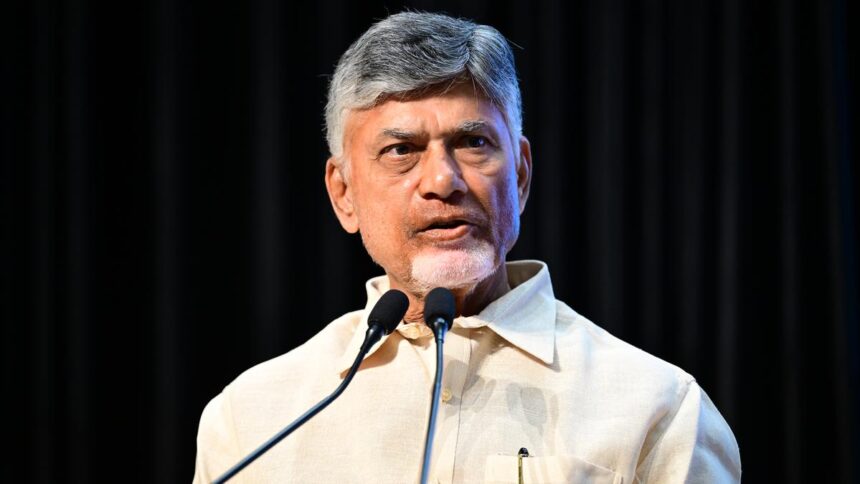
West Bengal Chief Minister Mamata Banerjee. File
| Photo Credit: ANI
Amid protests over alleged harassment of Bengali-speaking migrants in BJP-ruled States, West Bengal Chief Minister Mamata Banerjee on Friday (August 8, 2025) referred to Nobel laureate Rabindranath Tagore and wished that the country flourished without the “terror of language”.
She also hoped that people would wake up in an India where “Rabindranath’s language, Bengali, receives respect, dignity, and the love of all citizens”.
“I offer my reverence at the feet of the world poet Rabindranath Tagore. He resides in our hearts in every living moment. He is the poet of our soul, and I invoke him today from the depths of my heart. He is our guardian and our guiding light,” Ms. Banerjee posted on X.
Ms. Banerjee made her comments on a day that marks Tagore’s 84th death anniversary, which, according to the Bengali calendar, falls on the 22nd day of Shravan.
In Frames | Revisiting Rabindranath Tagore’s magic
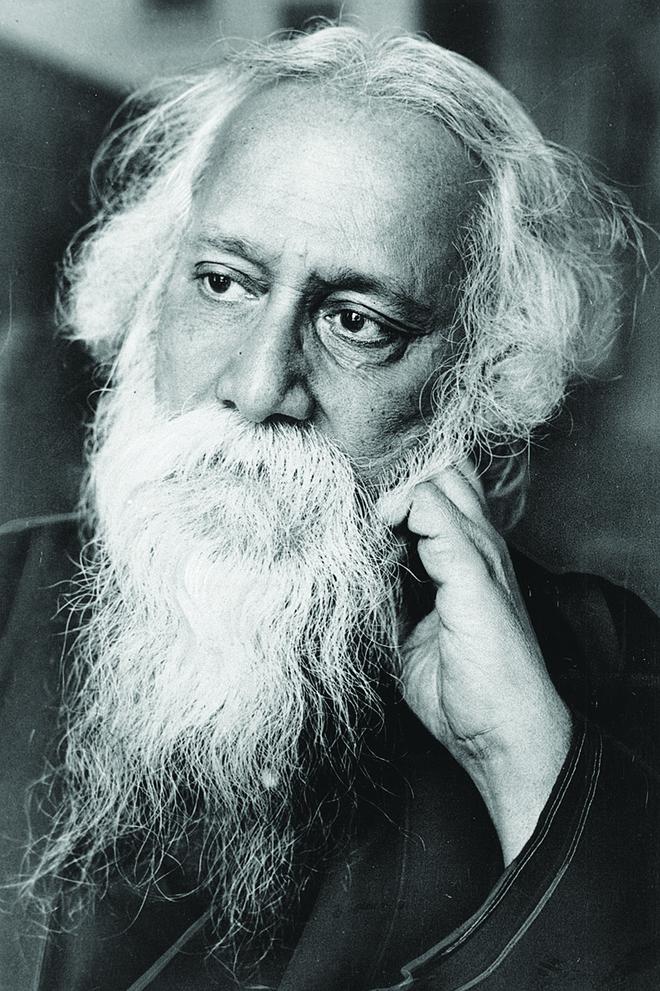
This is an undated photo of Sir Rabindranath Tagore, Hindu poet, writer and philosopher, in Calcutta, India.
Tagore was born in Calcutta in 1861 and was the first Asian to receive the Nobel Prize in literature in 1913. He was knighted in 1915, but denounced the honour in 1919 to protest against British policy in Punjab. He died on Aug. 7, 1941. (AP Photo)
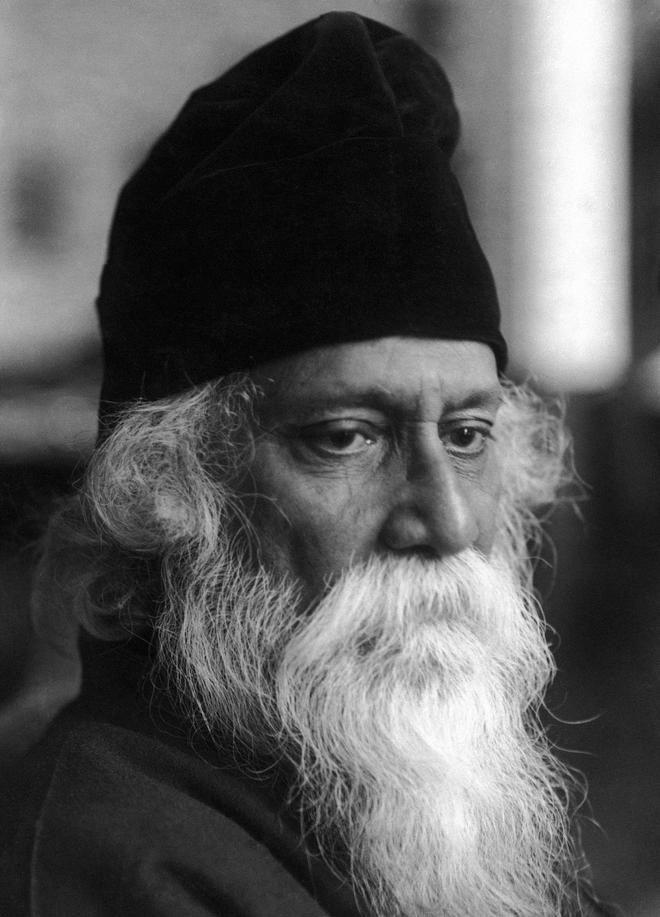
In this July 12, 1930 file photo, Rabindranath Tagore is shown while in Berlin, Germany. In 1913, Tagore became the first non-European to win the Nobel Prize in Literature for what the Swedish Academy described as “his profoundly sensitive, fresh and beautiful verse.” Tagore played a pivotal role in popularising Indian culture in the West through such works as “Gitanjali: Song Offerings.” (AP Photo, File)
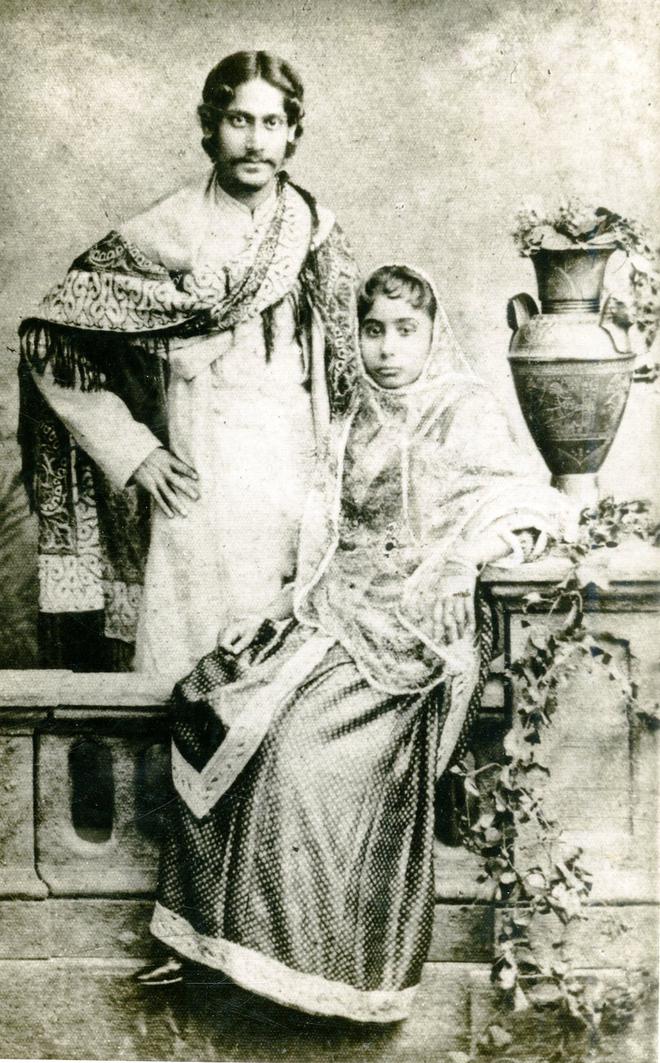
A picture of the poet Young Rabindranath Tagore taken with his wife, Shrimati Mrinalini Devi.
(Published in The Hindu on May 01, 2011)
Photo: The Hindu Archives
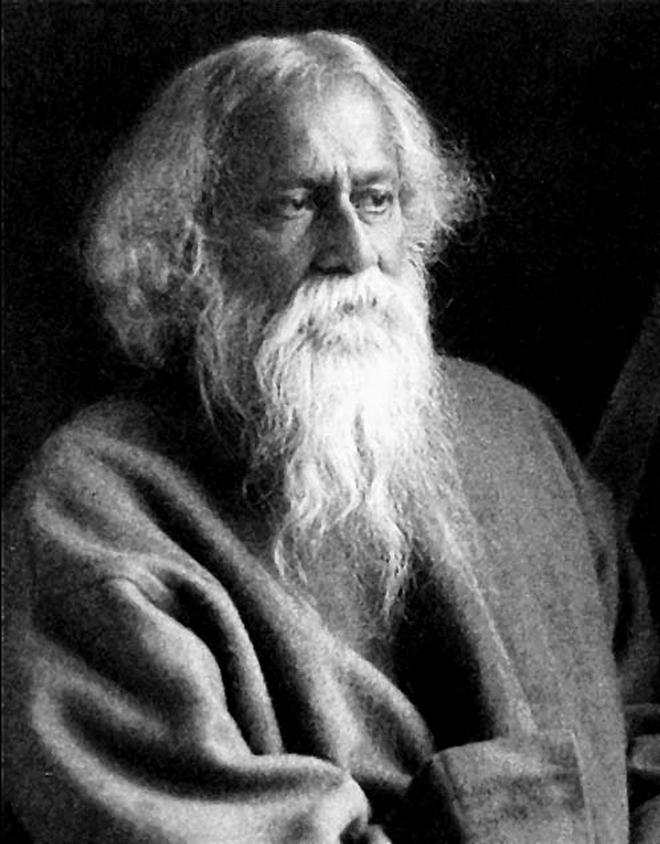
A portrait of Rabindranath Tagore. Tagore’s poems and prose are laced with a deep sensitivity to the human condition and its relationship with nature. The years of him living in East Bengal near the Padma River, in the 1890s, when he went to manage his family’s estate in Shilaidaha would bring to sharp focus notes of love and loss, cities and villages, loss and longing, nature and supernatural, innocence and childhood. . He later called this period “the most productive period of my literary life … when, under the shelter of obscurity, I enjoyed the greatest freedom my life has ever known.”
A photo of Sir Rabindranath Tagore photographed in Santinekatan, West Bengal. He named the school Visva-Bharati, laying the foundation stone of the school on December 24, 1918.
People’s reception in honour of Rabindranath Tagore at 99, Gower street, London in 1931.
Dr. Rabindranath Tagore, when in Berlin, paid a visit to Professor Albert Einstein in his cottage at Caputh near Berlin, where the two world famous men had an enjoyable time. (Pd. in The Hindu Illustrated Weekly dated 24/08/1930 Pg.09)
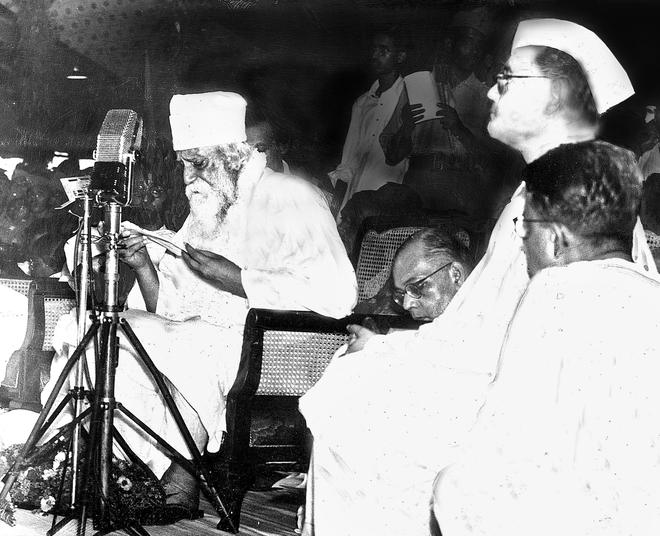
An undated picture of Rabindranath Tagore as seen with Netaji Subhas Chandra Bose. Bose’s first interaction with Tagore happened in 1914, when he was a student of Presidency College, Calcutta, and visited Santiniketan with some of his fellow students. Tagore and Bose held discussions on art, ideals of nation state and philosophy. In a letter dated May 1939, Tagore famously wrote to Bose: “Subhas Chandra, I am a Bengali poet. I hail you as the Deshnayak or the leader of the nation on behalf of Bengal…Bengal will not die after being tormented by destiny – we need you to raise this hope in the whole Nation.”
A characteristic portrait of Rabindranath Tagore. Tagore won the Nobel Prize in 1913 for his lyrical compendium titled Gītāñjali, his most famous work. Gītāñjali is a mystical exploration of faith, knowledge, human condition and civilisation. In the introduction to Gītāñjali, W.B. Yeats wrote:
“I have carried the manuscript of these translations with me for days, reading it in railway trains, or on the top of omnibuses and in restaurants, and I have often had to close it lest some stranger would see how much it moved me.”“I have carried the manuscript of these translations with me for days, reading it in railway trains, or on the top of omnibuses and in restaurants, and I have often had to close it lest some stranger would see how much it moved me.”
Two of the master minds of modern India, Rabindranath Tagore and Jawaharlal Nehru, engaged in deep conversation on November 4, 1936 at the sylvan retreat of the poet at Bolpur. (Pd. in The Hindu dated 9/11/1936).
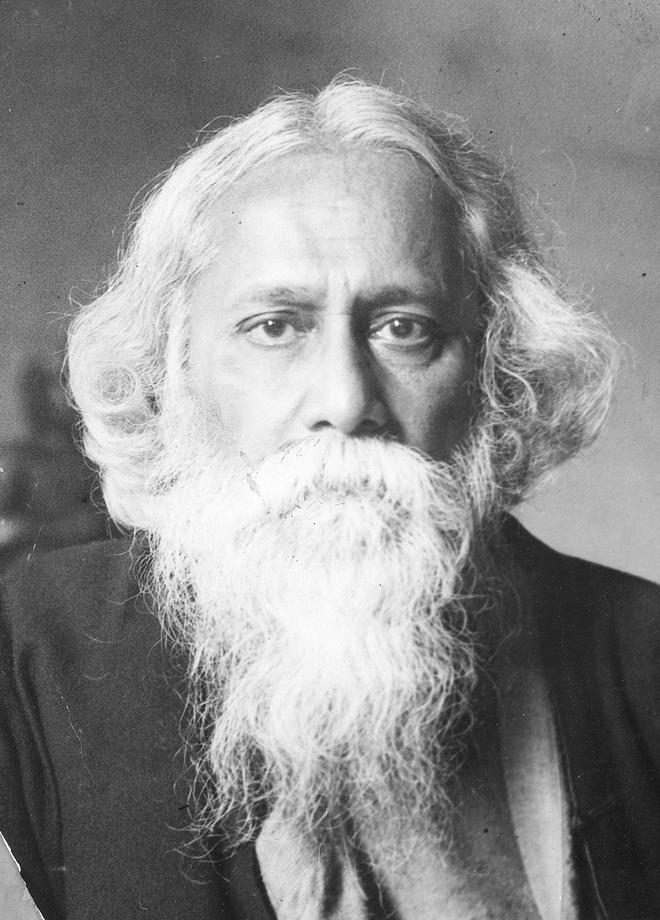
Photo of Sir Rabindranath Tagore. Tagore literary and ideological reach placed him in the company of visionaries and intellectuals — including W.B. Yeats, Einstein, French writer and Nobel Laureate Romain Rolland. His correspondence with Rolland, which transcends nations and languages, were documented in 2018 publication. Rolland wrote in his diary that Tagore’s lectures were a “turning point in the history of mankind” and described the poet/philosopher as a “burning flame of joy, which is always shrouded in a fog of melancholy in the West”.
Dr. Rabindranath Tagore as an artist, standing beside one of his paintings at the 56th Street Galleries, New York (23.05.1937) (Frontline dated Jan.10-23,1987)
Mahatma Gandhi and Kasturba at a reception given by Poet Rabindranath Tagore at the mango grove in Shantiniketan during their visit on February 17, 1940. Gandhiji was on a three-day visit to Shantiniketan on February 17, 1940.
Gandhiji with Gurudev Rabindranath Tagore at Viswabharati, in Santiniketan, the renounced Centre of Culture and Learning in February 1940 where Mahathma Gandhi spent three enjoyable days with the poet. Gandhiji was on a three-day visit to Shantiniketan on February 17, 1940.
Sir Maurice Gwyer, Dr. Rabindranath Tagore, Dr.Sarvepalli Radhakrishnan coming out from Sinha Sadan, Santiniketan after the Oxford University Convocation on August 7, 1940.
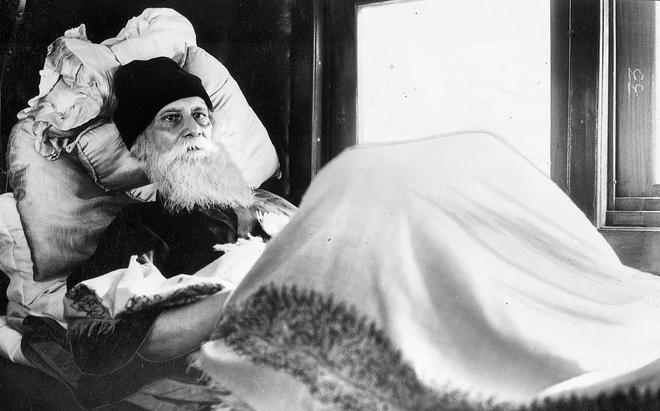
Rabindranath Tagore died on August 7, 1941. Grief has continued to “weave a long garland of tears”, he wrote in “My Reminiscences”, referring the quick succession of deaths of his wife and children. Despite the suffering, peace and joy emerged triumphant in his vision, with death taking on an inevitability, a guest he must welcome with folded hands. He once famously said: “Death is not extinguishing the light; it is only putting out the lamp because the dawn has come.”
1/3
“Every day is a day of remembrance in his memory. We remember the poet and celebrate him throughout the year and day and night.”
“May that nation awaken where Rabindranath’s language, Bengali, receives respect, dignity, and the love of all citizens. May that nation flourish where there is no terror of language,” the Chief Minister said.
Banerjee mentioned that the state government had on Thursday organised a programme in Jhargram district, remembering Tagore.
“Yesterday, we had a government programme in Jhargram. There, we had the opportunity to pay tribute to many scholars. We bowed to the world poet on that occasion. Before that programme, we also paid tribute to him publicly on social media,” she added.
Published – August 08, 2025 04:13 pm IST







